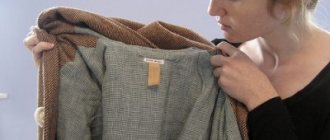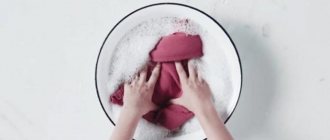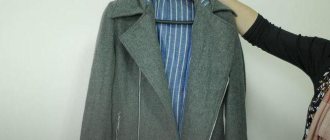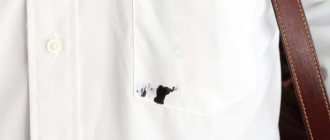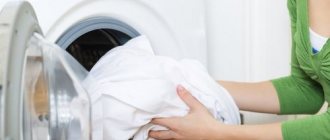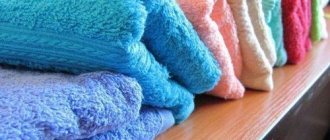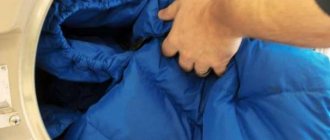Washing medical gowns
To ensure that doctors' uniforms always remain impeccable, medical gowns must be washed in a special manner. It provides for the careful removal of all types of contaminants, as well as protecting the fabric from a yellow tint. To keep the robe white, you need to wash it with special means. Additionally, you need to choose a method for how to safely starch an item so that it looks decent. You can wash workwear using folk recipes.
The main rule for caring for medical clothing is to wash it separately from other items.
What to buy at the store for laundry?
The medical gown must always remain clean, so regular care is required. But frequent water procedures can negatively affect the condition of the tissue. Therefore, it is worth choosing a product with a gentle effect. You can purchase it in the hardware department. To remove stains and whiten your robe, you can use the following purchased products:
- bleaching washing powder;
- laundry soap;
- "White" based on chlorine.
To ensure that a healthcare worker’s overalls are clean and keep their shape, they must be washed according to the rules. Before using store-bought products, be sure to read the instructions. First of all, you should pay attention to the material of the robe and color. The overalls worn by doctors are not always white; there are green and blue shades. But, regardless of color, medical items should always be clean.
Ironing
Medical clothing must be ironed at the selected temperature set for the material from which the particular product is made. The label on the clothing, which tells you the ironing temperature, will “tell” about this.
If not specified, the 150°C threshold should not be exceeded. Linen and cotton are ironed slightly damp. Over-dried items also need to be moistened; before ironing, they must be treated with water dust from a sprayer.
Ironing
The soleplate of the iron should not heat up to too high a temperature - it can burn or melt the fabric. In order not to spoil the material, before ironing you should check the smoothness of the sole of the iron - it should not catch on the material.
Particular attention should be paid to clothing with logos: they must be avoided to avoid damage to the element and the entire product.
Lemon juice
For delicate fabrics of medical gowns, it is worth choosing a delicate stain remover. Fresh lemon juice has bleaching properties, gently removes major types of stains and also disinfects the surface. Citric acid does not affect the thickness of the fibers. To wash a medical gown, you must follow the following procedure:
- For 6 liters of cold water you need the juice of 2 lemons.
- Leave the robe in the solution for 3 hours. During this time, the fabric should lighten.
- Wash with powder.
Return to contents
Basic rules
Before proceeding with the description of the procedure, you should take into account the fact that if the robe has been contaminated with biologically hazardous waste, it must be disposed of or handed over to a specialized institution for washing these contaminants. We will present to you the basic cleaning rules in other cases:
- First of all, it is necessary to wash medical clothing frequently, since it is a breeding ground for most bacteria, viruses and harmful microorganisms.
- The robe and surrounding clothing should be washed separately.
- To wash medical clothing, use professional disinfectants.
- Before you start washing, clothes must be soaked for an hour in cool water with the addition of a special product. If you clean in warm or hot water, you will only strengthen bacteria and microorganisms on its surface.
- Do not pour laundry detergent onto your clothes. There is a high chance that it may go bad.
- If your clothes have special labels with important information on washing, immediately study them to avoid unpleasant situations and know the specifics of washing.
- Water temperature. If the label does not indicate the permissible temperature for washing, then you can wash the robe even in boiling water, but if there are restrictions, strictly adhere to them.
Ammonia with peroxide
The most economical method to clean your robe from difficult stains. The products are affordable and can be purchased at the pharmacy. Washing goes through several stages:
- Fill a large basin with 8 liters of water, add 5 tbsp. l. alcohol and 4 small spoons of hydrogen peroxide.
- Immerse medical clothing in the solution for 3 hours.
- Place the still wet item in the washing machine and wash it on a delicate cycle.
Alcohol with peroxide softens water and removes yellowness even from an old medical gown.
How to iron and dry a medical gown
As a rule, medical clothing is ironed and dried in specialized institutions. But if you need to do it yourself, then you should know the general rules of drying and ironing. First of all, clothes should be dried outdoors away from direct sunlight. If the weather is nice, warm, and windy, it will dry faster than you expected.
You should know that drying these types of laundry is, for the most part, no different from drying or ironing other types of clothing. However, you should adhere to some basic and simple rules:
- Do not heat the iron to the maximum temperature so that it does not damage the fabric of the robe.
- If your robe has stripes and logos, iron them away from them. If you don't follow this rule, there is a high chance that you will damage them.
- If you are ironing your medical gown for the first time, touch the tip of the iron to the seams of your medical gown. If it doesn’t cling anywhere, then you can safely carry out the ironing procedure.
Ways to use soda
For workers who do laundry regularly, it is very important to choose an effective but inexpensive product. Baking soda is considered a universal cleaning product. It is absolutely safe for all types of fabric, including delicate synthetics. There are 2 washing options:
- In the washing machine. Add 2 tbsp to the detergent compartment. l. soda and powder. Select delicate mode, temperature 60-70 degrees. The extra rinse function must be turned on.
- Handwash. For soaking, you should prepare a solution: 6 large spoons of soda for 5 liters of boiling water. For a whitening effect, you can pour in a few spoons of ammonia. Soak the robe in the resulting product for 2 hours, then throw it in the machine for regular washing.
Return to contents
Wash by hand
This method of processing must be preceded by soaking the professional item for at least 30 minutes. with the detergent and disinfectant chosen for washing, for example fir oil.
The natural antiseptic is inexpensive and will destroy up to 98% of bacteria. Then the product will be washed better, and the problem of old stains will be solved, for which you can add a little stain remover to the soaking solution.
Plain bathrobes made from mixed fabrics are washed in water at 60°C after soaking. Cotton and decorated items should be washed in water at 30-40°C to avoid shedding. Cotton clothing will not shrink too much.
Products with snaps, large buttons, or zippers are best fastened and washed from the front and back. This will help you get rid of dirt and odors better.
A medical gown should not be subjected to strong friction in a soapy solution. With proper washing, the dirt will “go away”. The washed item must be rinsed in more than one portion of clean water, and the item can be wrung out. Soft cotton items can be starched to give them moderate stiffness.
Bleaching with turpentine
You need to use only proven products from a hardware store, otherwise marks will remain on the product. To carefully remove dirt, you need to wash it correctly:
- Prepare a solution for soaking using 1 tbsp for 1 liter of heated water. l. turpentine.
- Place your dirty robe in it. Leave on depending on the degree of contamination, but no more than 4 hours.
- Throw it into the machine, be sure to add fabric softener.
Turpentine is used to remove old stains or yellow discoloration.
Do-it-yourself washing
If you are going to wash it by hand, then follow the instructions from our website:
- First of all, soaking and disinfecting the robe should last half an hour longer.
- After soaking, drain the water, pour warm water and add powder or gel at your discretion (Gel is more effective in hand washing as it dissolves faster in water).
- Start washing. First, wash it with a rotational-forward motion (like a baker kneading dough). Continue the procedure for about 2-3 minutes.
- Leave it in water for 15 minutes so that the active components of the powder or gel are better absorbed into it.
- Take soap in your hands. Laundry soap is the best choice, as it is made exclusively from natural ingredients and has a high ability to kill germs.
- Rub thoroughly with soap in the areas where you notice stains on it.
- Now start washing again with translational and rotational movements of the “bread brush”.
- After this, let it sit in the water for about 2-3 minutes.
- Drain the water and add new water.
- Rinse it several times. Ideally, change the water 3 times.
- Wring it out thoroughly and hang it to dry.
How to dry?
You can dry your robe indoors or outdoors. In the latter case, with low air humidity, the item will dry much faster. Natural sunlight in moderate quantities will even benefit the product.
It is undesirable to allow it to dry out , as the robe may become deformed and the wear resistance of the material will decrease. In addition, a dry robe will be more difficult to iron.
It is best to dry the robe with it turned inside out - this will prevent accidental contamination of the material and fading.
Useful tips
In order to extend the service life of a medical gown and maintain its presentable appearance for a long time, several recommendations should be taken into account:
- Cotton items cannot be washed together with synthetics.
- When washing cotton, the ideal temperature is 60 degrees. In this case, add a little salt to the water.
- When using laundry detergents, it is recommended to first test them on a small piece of fabric.
This way you can extend the life of the medical gown and eliminate the need for frequent use of bleaching agents.
How to wear trousers with stripes
What to wear with classic men's trousers
How to starch a cap
In order for the cap to acquire a good stand, you will need gelatin, PVA glue and starch (it is better to use potato starch).
If the cap is not new, if there is dirt, be sure to get rid of it. Only clean cloth is used for starching.
Take 2 tablespoons of starch per liter of water. Store bought will do, you can get it yourself.
Take 100 ml from the volume and add starch, stir until smooth. Then slowly pour the resulting slurry into a pan of boiling water. After three minutes, remove from heat and let cool to 40 degrees. Place the cap in the solution that has cooled to the desired temperature for 15 minutes. We take it out, let the cap drain a little and put it on the jar. You can make a suitable shape from paper. You can press the cap only when it is on the can.
Handwash
Washing a robe by hand is not difficult. It’s better to start by pre-soaking it in an aqueous solution of detergent . You can use both powder and gel. The main requirement is to thoroughly dilute the drug in water.
For a white coat, it is recommended to select products that are intended specifically for white things. In cases where the medical gown has a tint, universal powders are used.
Before soaking, it is better to soap the soiled areas. If there are stains, they should be removed before washing.
Washing procedure:
Pour warm water into a basin.- Dilute the detergent in water according to the instructions.
- Dip the robe into water and rub lightly.
- Leave for 30-60 minutes.
- Tinder again.
- If the water is dirty after soaking, it is drained and a new solution is prepared.
- The robe is washed, paying attention to the collar, cuffs, and pockets.
- Rinse.
- They squeeze it out.
- Dry.
After washing, the item must be wrung out, not twisted. This will avoid deformation.
FOR MEDICAL INSTITUTIONS
Are you looking for a laundry service for your clinic, but are not sure that private companies can be trusted to do laundry in accordance with SanPiN? Do you think that owning your own laundry is more profitable than outsourcing your laundry? The “Formula of Purity” will dispel your doubts!
Special requirements for processing medical textiles:
- Powerful disinfection, absolute sterility of textiles leaving the laundry.
- Medical facilities require frequent washing in accordance with sanitary standards.
- Great emphasis on stain removal: working with difficult stains from medications and body fluids.
- A lot of fashionable linen - bathrobes, staff uniforms.
Professional dry cleaning for clinics “Formula of Cleanliness” is able to provide conditions for high-quality processing of linen and is ready to wash up to 300 kg of medical textiles per shift.
How is medical linen washed?
Processing is carried out in accordance with SanPiN 2.1.3.2630 “Sanitary and epidemiological requirements for organizations engaged in medical activities.”
- Medical linen is washed separately from the linen of other laundry clients. Belgian equipment from D'Hooge Industries was purchased for medical institutions. Barrier-type washing machines allow you to separate dirty laundry from clean laundry: dirty laundry is loaded in one room, and clean laundry is collected in another. The flows of dirty and clean things do not intersect. This is a guarantee that the laundry after disinfection will not come into contact with potential sources of germs.
- Professional disinfectant compounds are used, which are supplied automatically in the washing mode. We use BeProf chemistry.
- High-quality drying - linen for hospitals must be dried before ironing. Therefore, no under-dried sheets and towels! Ironing straight and shaped linen on ironing rollers.
- If necessary, linen is packaged in individual bags. The packages are sealed and delivered to the clinic.
- Medical textiles are delivered separately from other linen to avoid re-contamination.
- Employees' clothing, cars, premises and all auxiliary devices located in it, as well as the delivery vehicle, are processed and disinfected at the end of each work shift.
About prices
The price of dry cleaning for clinics depends on the volume of laundry. Proven technological processes allow you to save money without losing quality. Therefore, prices are attractive for both network clinics and individual establishments.
Call the manager to find out how much dry cleaning will cost for your establishment. Our phone number is 8 (495) 215-24-54.
Drying and ironing
White fabric does not tolerate exposure to sunlight; it turns yellow. Try not to dry things in a heated room near a radiator, as this can cause the clothes to shrink.
If you used bleach or ammonia in your laundry, air dry the items until the chemical odor is completely removed. Drying a robe on a clothesline can lead to creases in the fabric; try to dry your overalls on a hanger.
Washed cotton clothes are ironed better if slightly damp. Hang the ironed item on a hanger with wide hangers to dry completely.
- How to ring a heating element on a washing machine with a multimeter
- Program failure in washing machine
In the washing machine
Machine washing of medical clothing significantly saves time and makes work easier. This is especially important because a medic’s work uniform must be washed regularly.
With what?
Before washing, all items must be sorted . Studying the product label will help you determine the washing conditions.
A white robe can be sent in one load only with similar clothing - T-shirts, T-shirts and other things that are used at work along with the robe.
At what temperature, in what mode?
The optimal washing temperature for most bathrobes is from +40°C to +60°C.
If the fabric is synthetic, then the maximum temperature on the label may be indicated by the manufacturer even lower.
For bathrobes that only need to be refreshed, the “delicate wash” is selected , for well-worn cotton ones – “cotton”.
Selecting a detergent
For regular washing of a white medical gown, it is recommended to choose washing powders and gels designed specifically for clothes of this color. If the robe has a different shade, use universal detergents designed for colored items.
In any case, regardless of the fabric, it is advisable to avoid compositions with chlorine . This substance is quite aggressive towards the fibers of the material and can lead to rapid wear of the fabric.
For medical work clothes, it is better to choose detergents with antibacterial properties.
To soak or not?
A greater effect from washing stained items is achieved by pre-soaking the product. To do this, use cool water in which the detergent is diluted.
The robe is dipped in the washing solution for 1-2 hours, after which it is washed. You can use the “soak” mode if the washing machine has one .
Using hot water for the soaking process is not recommended if there are stains, as the high temperature can set them even stronger.
Rinse and spin
After washing, the robe must be rinsed thoroughly. To do this, it is recommended to set an additional rinse .
Spinning at high speeds allows you to get an almost dry item out of the machine. But this harms the fabric. If you finish washing every time with an intensive spin, the robe will quickly become unusable.
Average indicators are enough so that the product is not too wet, but also does not suffer from processing at high speeds.
Rental of Lindstrem medical clothing includes washing
Assortment and characteristics of clothing.
Our medical clothing meets occupational health and safety requirements, is comfortable to wear and looks great. Standard collections are made in blue, white and green. For the production of medical clothing, we use lyocell fabric - an artificial cellulose fiber. It prevents the growth of bacteria and is hygroscopic: the fabric absorbs water vapor, and the clothes remain dry for a long time. Lyocell combines the qualities of wool and cotton and, due to its soft texture, does not cause irritation.
Services.
We take care of the entire service process - from procurement to disposal. We will help you choose the appropriate kits and deliver them to your medical facility. We pick up dirty clothes, wash them in laundries and deliver clean sets of medical uniforms. We also repair clothes and replace them if they are unsuitable. We hand over old workwear for recycling without harm to nature. Renting clothes for medical personnel will solve storage and washing issues. At the end of the shift, health workers put their clothes in a special container, and the next day a clean and disinfected uniform will be waiting for them. Doctors and nurses will not have to waste time washing their work clothes, which they can devote to rest, self-education and working with patients.
How to whiten at home?
A white medical coat is the work clothes of doctors, which is used daily. In order for the item to retain its whiteness and look impeccable, it is necessary to use bleaching. Household chemicals and traditional medicine recipes proven over the years will help restore the shade.
Folk recipes
It is possible to bleach a bathrobe efficiently at home using readily available preparations.
Peroxide and ammonia
This method is one of the simplest. The whitening mixture contains only 3 ingredients:
- ammonia;
- water;
- hydrogen peroxide.
Work order:
- Pour 10 liters of water into a basin.
- Pour 5 tsp into water. peroxide.
- Add 5 tbsp. l. ammonia.
- Stir.
- Dip the item to be bleached into the solution.
- Leave for 1.5-2 hours.
- Rinse.
If the robe is very dirty, then it is recommended to add another 1 tbsp to the bleaching solution. l. turpentine.
Ammonia, peroxide, salt and powder
Medical white clothing, which is made from cotton and blended fabrics, can be bleached according to a recipe with a larger number of ingredients than in the previous method.
For processing you should prepare:
- water;
- hydrogen peroxide;
- salt;
- washing powder;
- ammonia.
Whitening procedure:
Pour 10 liters of warm water (+40ºС) into a basin.- Pour in 4 tbsp. l. peroxide.
- Add Art. l. ammonia.
- Add 5-6 tbsp. l. salt.
- Add about 50 grams of washing powder.
- Mix everything.
- Leave the robe on for half an hour.
- Rinse under running water or change the water in the basin several times.
If the robe is heavily soiled, it is recommended to wash it in the usual way after soaking it in a bleaching solution.
Lemon juice
The most affordable whitening agent is fresh lemon. To prepare the whitening composition you will need:
- warm water (8-10 liters);
- lemons (2 pcs.).
Whitening:
- Pour water into the basin.
- Squeeze the juice of the lemons.
- Mix.
- Dip the robe.
- Leave the item in the basin for 8-10 hours.
- Rinse.
Bleaching with lemon will only work on items that are not too dirty and have fresh stains. Lemon juice will not cope with old stains and general wear and tear.
Household chemicals
Household chemicals departments offer a large selection of whitening products. These include both the simplest (for example, Whiteness) and modern preparations that are safe for fabric and very effective.
White
Washing procedure:
- Pour 10 liters into a basin. water.
- Dilute 2 tbsp. l. Whiteness.
- Soak the robe.
- Leave for half an hour.
- Rinse.
- Wash.
The disadvantage of using bleach is the chlorine that is included in its composition. This product should not be used on a regular basis, as the fabric quickly deteriorates under such exposure.
Washing in a White solution is only possible for cotton white coats and only as a last resort.
Oxygen-containing bleaches
Among bleaches, oxygen-containing agents are leaders in their effectiveness and safety towards fabrics. Such preparations must be used as needed to maintain the snow-white color of the item.
Popular whitening products include:
- "Vanish";
- "Dr. Beckman";
- "Synergetic";
- "Sail" and others.
